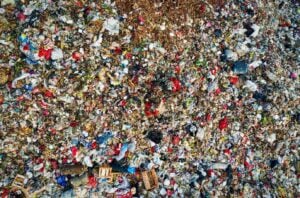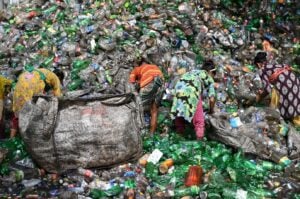August 30, 2022 / by FMP
Filed Under: Uncategorized
Are Landfills Bad For The Environment?

We are all concerned about the environment, but we need to use landfills. They provide a place to deposit waste products, so they do not contaminate our soil, water, and air. Although landfills have been around for centuries, their design and operation have undergone many changes to make them more environmentally friendly.
But does a landfill pose a threat to the environment?
The truth is that dumps are not perfect. They can release methane gas and leachate (a liquid that has come into contact with landfill waste) into the environment. These emissions can contribute to pollution and changes in the climate.
To get to the bottom of whether landfills are bad for the environment, we need to take a closer look at how they work and their impact on the world.
How Does a Landfill Work?
A landfill is a site where trash is disposed of in a controlled manner. Landfills are carefully designed to protect the environment from the waste deposited there.
The waste gets dumped in specified areas in the landfills, called “cells” or “modules.” These areas are lined with materials that prevent the trash from leaking out.
Once a cell is full, it is covered with soil to keep pests and animals out and control odors. The landfill is then monitored to ensure the waste is not causing any environmental damage.
Ways a Landfill Helps the Environment
A landfill can positively impact the environment if designed and managed correctly. Understanding these advantages can help change the way we think about landfills. Also, we will be able to make the most of landfill usage and help reduce environmental impact.
Here are some advantages of landfills:
Renewable Source of Energy:
Landfills are an ecosystem unto themselves. They are home to landfill gas-to-energy (LFGE) plants, which use landfill gas to generate electricity. LFG is a renewable source of energy that can be used to power homes and businesses. In addition, it helps reduce odors and landfill gas emissions into the atmosphere.
Read another blog we wrote about Electric Cars and the Environmental Impact!

Helps Us Recycle:
Landfills are not just a place to dump our trash; they can also be a place to recycle. For example, construction and demolition debris, such as concrete, asphalt, and metal, can be crushed and used as fill material in new construction projects. As a result, it reduces the need to mine for new materials, which can save energy and resources.
Wildlife Habitat:
Landfills can be a habitat for wildlife. Once a landfill is closed and covered, it can become a meadow or forest. Animals such as birds, rabbits, and squirrels can live there. Plants can also grow on landfill property, providing food and shelter for wildlife. These landfill habitats can help offset the loss of natural habitats due to development.
Creates Jobs:
Who thought a dumpster could be a job creator? Landfills create jobs. They require workers to operate and monitor the landfill site. There are also opportunities for scientists, engineers, and environmental specialists. These jobs help support the economy and provide a landfill service that benefits the community.
Ways a Landfill Hurts the Environment
As with everything else, there are also some disadvantages to having a landfill in the community. These disadvantages need to be considered when deciding to build a landfill.
A Landfill Takes up a Lot of Space:
A landfill is a life-size dumpster. In the United States, there are about 2,600 landfills. On average, one landfill occupies nearly 600 acres. According to this calculation, landfills take up about 1,560 square miles of space in the U.S. That’s a lot of space that could be used for other purposes, such as housing or parks.
Read more by another blogger, Peter Dublin.
